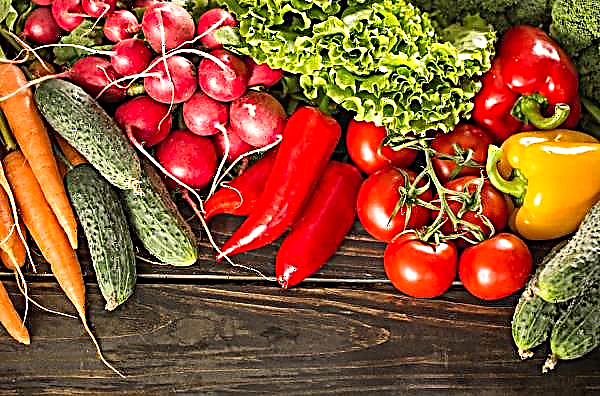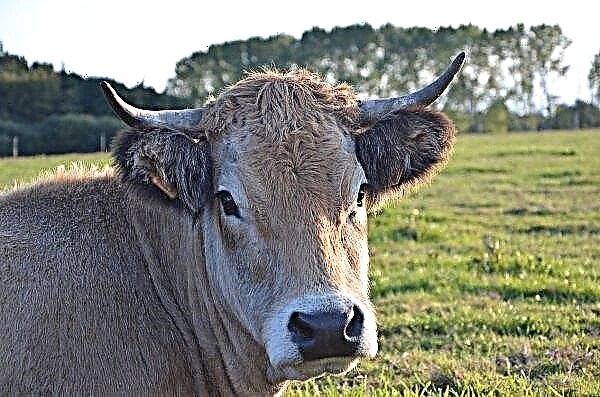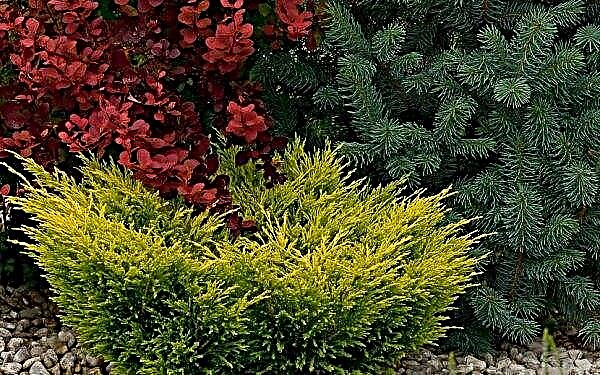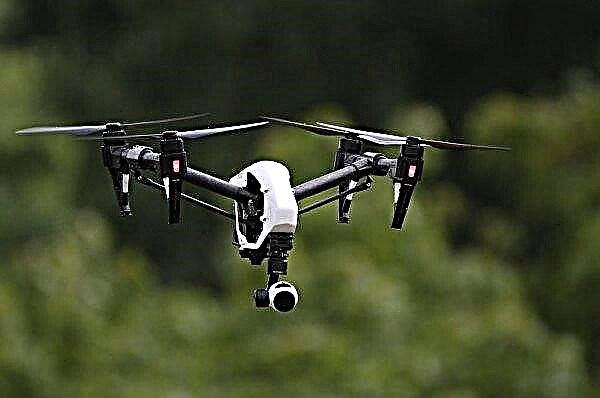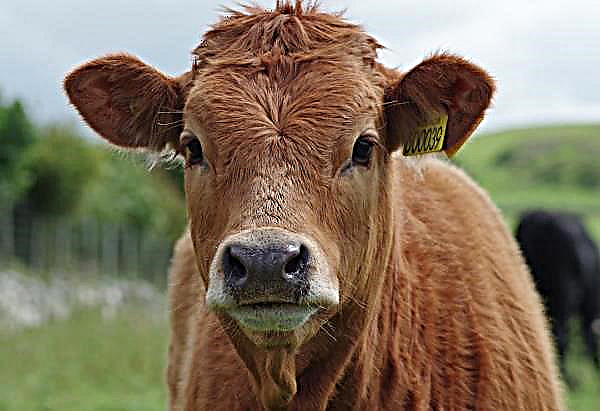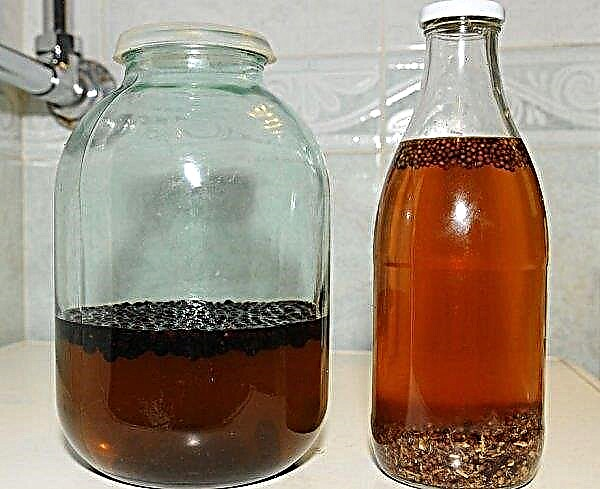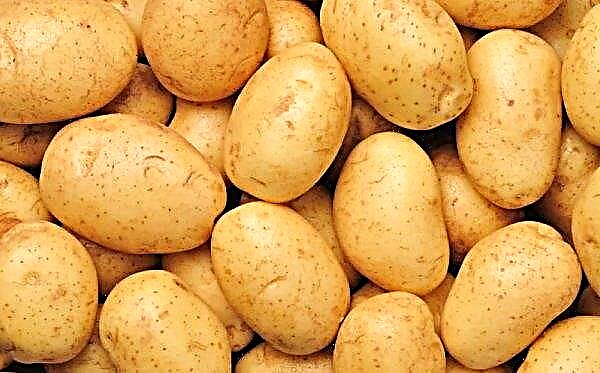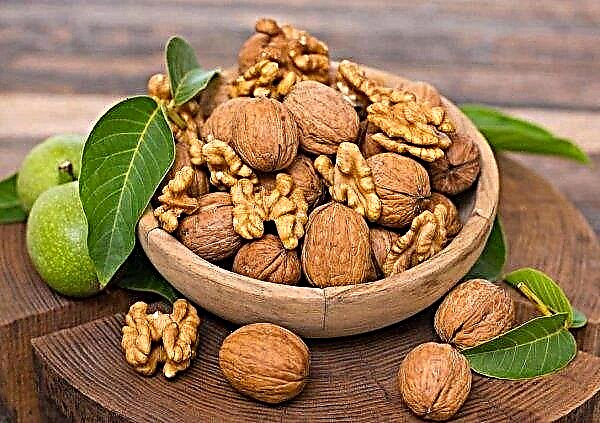Despite the fact that quite a lot of cold-resistant varieties of watermelon were bred by breeders, it was still not possible to completely solve the problem of obtaining a melon crop with the same qualities as in the southern regions. However, there is a way out - to plant a watermelon on a pumpkin. How to do it right, and what such a method will give you, read below.
What is vaccination for?
Watermelon, cucumber and melon belong to the pumpkin family. In contrast to the heat-loving crops described, which do not always have time to ripen completely in cool latitudes, pumpkin has more endurance. Vaccination is necessary to preserve the varietal characteristics of the thermophilic culture and increase its resistance to cold.
Did you know? According to the botanical classification, the fruits of watermelon and pumpkin are multi-nested paracarp berries.
In addition, the root system of grafted plants develops much better, which ensures greater digestibility of nutrition from the soil, increasing resistance to diseases and pests. The fact is that watermelons often suffer from root Fusarium, and pumpkins are resistant to this disease at the genetic level.
Vaccination has its pros and cons, which need to be studied in more detail before the manipulation itself.
- The advantages of this technique are:
- increasing the resistance of watermelons to negative environmental factors;
- obtaining immunity to root fusarium;
- improving the quality of rooting and absorption of nutrients from the soil;
- harvesting with excellent varietal qualities;
- reduced demands on soil composition, heat and moisture.
The disadvantage of this manipulation is that not every pumpkin variety will be suitable as a stock. In addition, the procedure requires great care, because young plants are very fragile material that is easy to damage.

Is it possible to plant a watermelon on a pumpkin
Watermelons can be successfully planted on a pumpkin. The main thing: to choose the right stock. Lagenaria, a decorative squash from the pumpkin family, is best suited for this purpose.
As a scion, it is best to use the following varieties of watermelons:
- Chill;
- Astrakhan;
- Chernouska;
- Kherson;
- Korean.

Terms of the procedure in different regions
Rootstock and scion are grown by seedling at home. Vaccination is also carried out before planting crops in the soil. Given that the germination of seeds and seedlings reaching the optimum age for manipulation will take about 1-1.5 months, in the middle lane sowing of seeds is carried out in late March-early April, in the more northern regions in mid-April. Planting of grafted plants in the soil is carried out in mid-late May, depending on weather conditions.
Vaccination Methods
There are 3 methods according to which the manipulation in question is performed:
- rapprochement;
- in a side incision;
- into the cleavage.
Each of them has its own characteristics, which are worth considering in more detail.
The substrate for the plants is prepared by mixing in equal parts:
- peat;
- soil from the site;
- sand;
- leaf humus.
 The same manipulation for all methods of vaccination is the cultivation of seedlings. Watermelons can be sown in common containers for seedlings, and lagenaria - only in individual peat pots.
The same manipulation for all methods of vaccination is the cultivation of seedlings. Watermelons can be sown in common containers for seedlings, and lagenaria - only in individual peat pots.
20% of the total weight of wood ash is added to the composition, watered with hot water. After cooling the soil to + 30 ° C, they land. Watermelon seeds in a common container are placed at a distance of 5 cm from each other and in rows. The seeds of both crops should be buried no more than 0.5 cm.
After landing, the containers are covered with a film and kept at a temperature of +24 ... + 27 ° C in a dark place until the sprouts appear, periodically opening them for ventilation and moisturizing. With the advent of sprouts, plants are rearranged on a well-lit window sill and wait until they reach the optimal age for vaccination. Watermelon sprouts at the time of the manipulation should have 2 true leaves, lagenaria - 1.
Important! Lagenaria seeds give seedlings faster than watermelon, so they need to be sown 5 days later.
Rapprochement
Seedlings of stock and scion the day before the manipulation is well watered. The next morning they are planted in a separate peat glass in close proximity to each other. Previously, before planting, on the sides of the stems with which the plants will touch, make cuts with a blade no more than 0.7 cm. You can not deepen much, but simply remove the top layer of the skin from the stems. The notch places are interconnected, fixing with foil.
After 5-7 days, the stem of the watermelon seedling must be pinched below the level of vaccination. To do this, you will need a special clothespin, which can be purchased at a flower or hardware store. So the watermelon culture will begin to receive food due to the stock, and its own root will soon dry out. After 7 days, it will be possible to land in open ground. Previously, the pumpkin sprout can be cut off.
 1 - a seedling of pumpkin or lagenaria, 2 - a seedling of watermelon, 3 - the location of plants during vaccination, 3a - the location of the plant at the time of planting in a pot, 4 - grafted watermelon
1 - a seedling of pumpkin or lagenaria, 2 - a seedling of watermelon, 3 - the location of plants during vaccination, 3a - the location of the plant at the time of planting in a pot, 4 - grafted watermelon
Side cut
This is another way of drawing closer, involving deeper cuts on the stems. Slightly lower than the cotyledons on plants, cuts deep into 3/4 of the width are made - on the seedlings of the lagenaria they are performed from the bottom up, and on watermelon, on the contrary, from top to bottom. Thus, on the stems “tongues” are obtained. Such a watermelon tongue is inserted into the corresponding incision in the lagenarii, then the seedlings are fastened with foil and planted in one container.
Important! Incisions must be made with a blade previously treated with boric acid. It is also advisable to disinfect the hands with alcohol before carrying out the manipulation so as not to introduce infection into the wound surface of the plants.
After 4 days, the stem of the watermelon is squeezed with fingers or tweezers, and even after 4 days, the watermelon stem is completely cut off. Pinch the growth point of lagenaria 3-4 times so that it does not develop. So the watermelon sprout will begin to receive nutrition from its root.

Split grafting
This technique involves the following steps:
- In lagenaria, remove the growth point at the anlage of the second true leaf. Make a deep incision (1.5–2 cm) at an acute angle.
- In a watermelon seedling, cut off the top by making a cut under the cotyledonary kidney. From the beginning of the cut to the cotyledon, remove the skin.
- Insert the watermelon stalk into the lagenaria cleavage, placing the cotyledons of the first plant over the cotyledons of the second.
- Fix the place of vaccination with foil.
 After just a couple of weeks, the graft will begin to grow - new leaves will appear on it
After just a couple of weeks, the graft will begin to grow - new leaves will appear on it
Further care for grafted watermelons
Immediately after vaccination, the plant is placed on a well-lit window sill and provides air humidity within 80% and a temperature regime of +25 ... + 28 ° С. When all the manipulations to remove the lagenaria growth point and the watermelon stem are carried out in accordance with one of the vaccination methods described above, one can begin to gradually lower the air temperature to + 15 ° С. If the weather is warm on the street or it is possible to cover the seedlings with a spanbond, then after 1-2 weeks they can be dived to a permanent place.
The grafted seedling needs to be grown in an open area protected from draft. The plants under consideration bear fruit well on light fertile soils, therefore, a month before their planting, loosening to a depth of 30 cm should be carried out and 20 kg of compost, 10 kg of peat and 600 g of wood ash should be applied to each 1 m².
Did you know? More than 800 varieties of pumpkin are known, but only 25% of them can be eaten.
Wells are placed at a distance of 50 cm from each other. Between the rows keep the same distance. Planting pits are made so deep that they enter a peat pot in which plants were placed at the time of vaccination. After planting, the soil is watered with 1 liter of water, waiting for its subsidence, add the missing layer. Then mulch the soil with fresh grass.

Throughout the season, they observe the irrigation regime: they do it once a week, in the evening, with warm, settled water. In the dry period, watering should be increased to 2-3 times a week.
As fertilizers, every 10-14 days use a vegetable infusion. To do this, add 5 kg of nettle, 3 banana skins, 2 tbsp. To 20 l of water. l wood ash and 1 tbsp. Sahara. Leave the mixture to ferment for 1-2 weeks. After this, decanted, diluted in a ratio of 1: 1 with water. Contribute 1-2 l under the bush. The remains of vegetation are used as mulch.
Stop feeding at the moment when the fruits cease to gain volume, about 3-4 weeks before harvesting. In the same period, watering is completely excluded.

In order to get a good crop of watermelons every year in any weather conditions, you can use the vaccination technology for pumpkin, or rather, for one of its varieties - lagenaria. This approach allows you to increase the resistance of the main culture to drought, high humidity, temperature extremes and disease.

